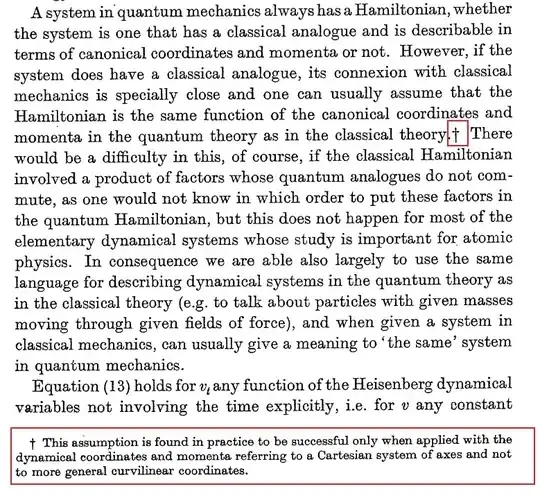I am reading The Principles of Quantum Mechanics by Dirac, in chapter 28 Heisenberg's form for the equations of motion, there is a statement about the classic analog about the Hamiltion form between classic mechanics of and quantum mechanics. My questions are:
If classic analog means that the Hamiltonian operator is the function of $q$ and $p$ (position and mom), then what is the premise of this assumption?
Is there any example of a Hamiltonian that couldn't be expressed as the function of $q$ and $p$?
There is a footnote saying that under Curvilinear coordinates, this assumption is NOT right, so I guess that under Curvilinear coordinates, the classic Hamiltonian form and quantum Hamiltonian form are NOT the same, is there an example of this situation? And why would this happen?
